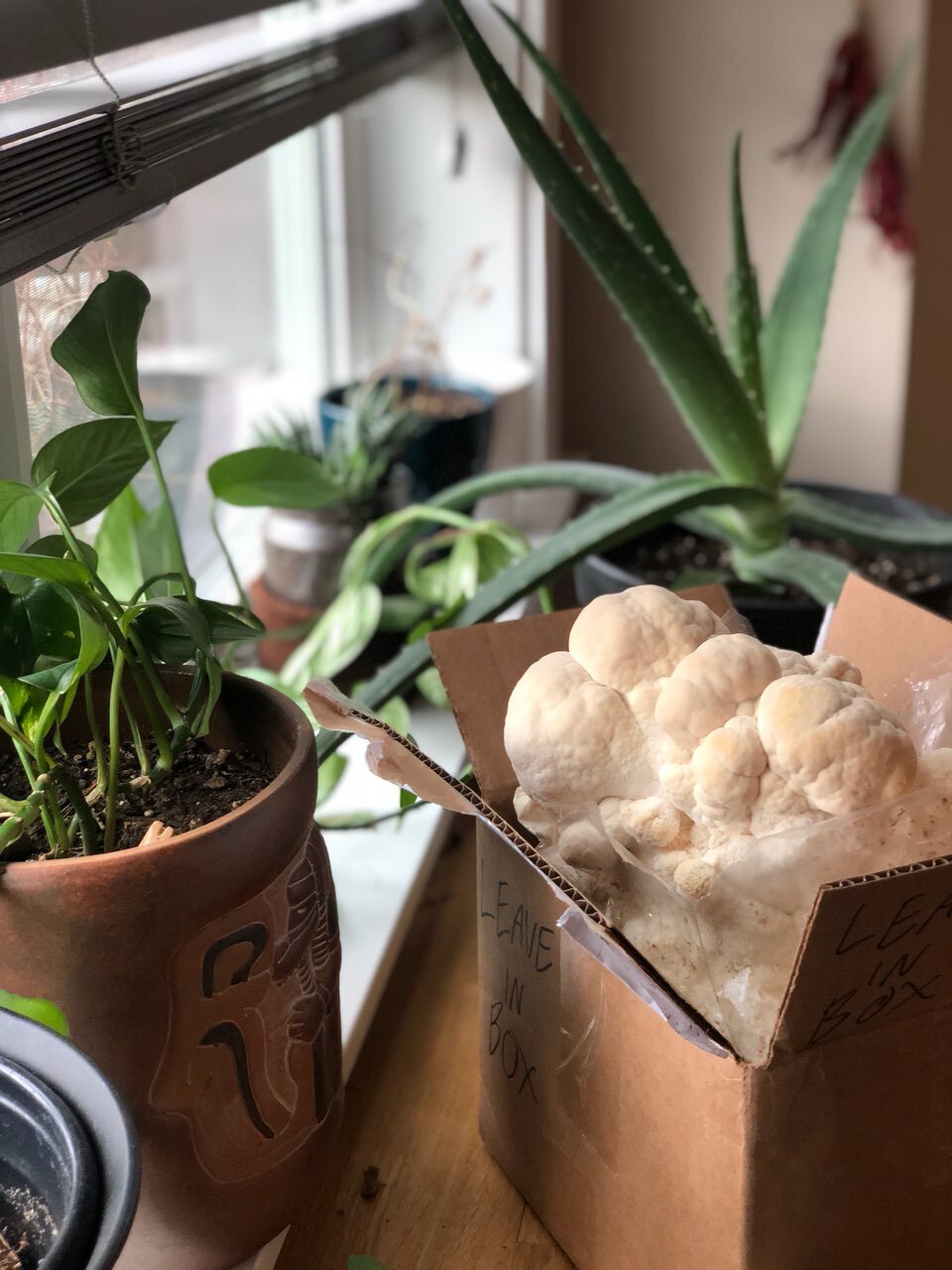Lion’s Mane Grow Kit Instructions
Step One
Put your kit box in a cool area with fresh air, away from direct sunlight and strong breezes (a kitchen countertop or closet are great). You should be looking into the kit box from the top (the side with the shipping label).
Step Two
Inside the box your kit arrived in, you'll see a plastic-lined substrate block. Leave it in the box and use a clean, sharp knife to cut an X-shape into the center of the block, about 1/4 inch deep.
Do not peel back the plastic.
Step Three
Spray the slits you made with clean water 3-5 times a day. Keep doing this until you see small white lumps (primordia AKA baby mushrooms!) forming.
You can raise the cardboard flaps of the box to help retain humidity.
Step Four
Instead of using a plastic bag, this clever customer used saran wrap and a chopstick to make a tent over their lion’s mane. The results were fantastic and they got a great flush!
When the primordia have formed, stop spraying the slits. They will grow into full-sized mushrooms over the next week or two.
Only spray water again if the mushrooms start to yellow or dry out, and only spray around them, not directly onto them. For better results, you can increase humidity by placing the kit in a humid part of your house or for very dry homes, follow the tip below.
TIP: Dry mushrooms/primordia? If you are finding that your mushrooms are drying out at any stage, you can make a humidity tent for your kit. All you have to do is take a clear plastic bag or saran wrap, poke several small holes in it, and cover the kit with it.
If you are finding that your lion’s mane is beginning to appear “coral-like” or otherwise not looking like the typical “pom-pom” shape, that means it needs more fresh air. In this case, lift the bag or saran wrap up a few times a day to give the mushrooms some air circulation.
Step Five
Place your grow kits by your houseplants! The mushrooms give off CO2 which the plants breathe and the plants give off oxygen which the mushrooms breathe — perfect symbiosis!
Lion’s mane grows slow, but after a week or two, harvest your mushrooms when the “teeth” on the lion’s mane feel stubbly but before they reach 1/2 inch in length. The shorter the “teeth”, the denser the mushrooms.
After you harvest you can spray the same slit additionally to encourage a second (or eventually third) flush, which will be smaller than the previous flush. You may choose to remove the block from the box, flip it over, place it back in the box, and create a new slit to encourage new growth.
Even if nothing is growing after your first harvest and you decide to stop spraying, do not throw out the block because mushrooms might pop up when you least expect it! Check back every couple of days.



